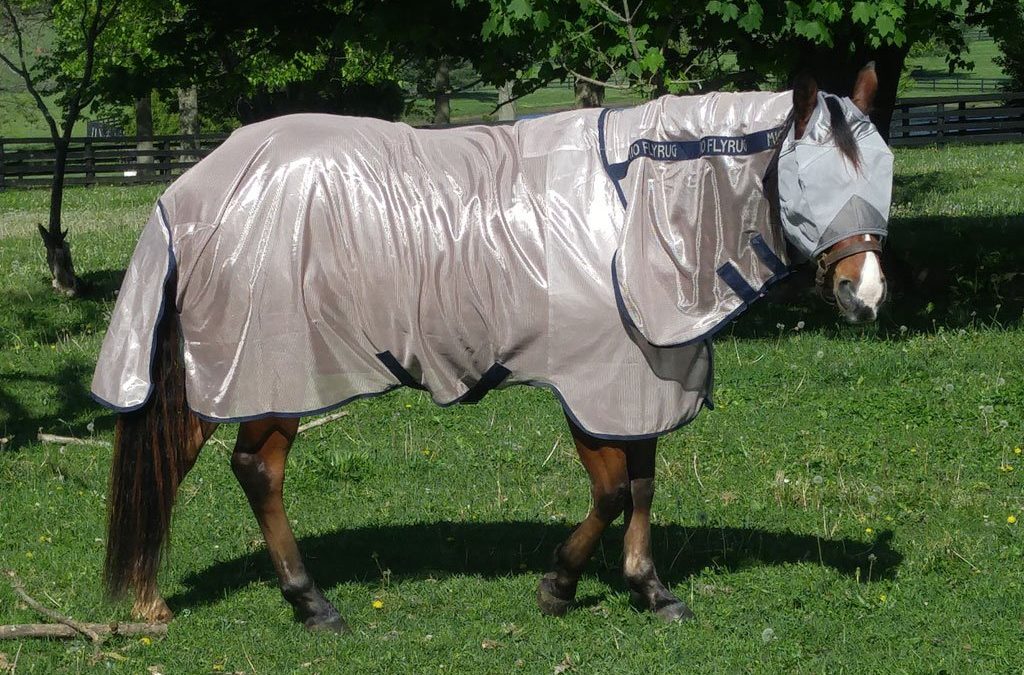FIGHTING FLY ALLERGIES & MOSQUITO BORNE DISEASES STARTS WITH A PROACTIVE UNDERSTANDING OF THESE PROBLEMS
It Takes More Than Insect Repellent To Manage Fly Allergies & Mosquito Control Issues. Learn How To Prepare Yourself For This Season’s Pest Control Problems.
With trees and shrubs blooming and fly season approaching, you need to prepare your barn and horses for the upcoming warm weather and all the pollen, insects and mud that can wreak havoc on coats and hooves. Many horses develop allergies to environmental irritants and various flies. Here are a few things that can keep your horses comfortable as they transition from winter to spring:
- Clean out your barn (power wash if possible), sweep out stalls and aisles and fill with fresh bedding
- Remove all manure piles in or close to the barn
- Put all feed in closed containers
- Install a fly control system or hang fly strips
- Hang fans on doors and install attic fans if possible
- Wash all summer sheets and fly masks using fragrance-free detergent
- Purchase a good fly spray that can be safely used on your horse and in the barn
- Provide shelter to pastured horses
- Treat ponds and lakes to limit algae which attracts insects
- Spray trees in and around pastures for mosquitos and other bothersome insects
- Release predator flies periodically throughout the warm season
- Keep pastures and fields harrowed and mowed
Certain insect-related skin issues are difficult to deal with once they start. Some insect bites can even set off allergic reactions—in particular, sweet itch, an allergic reaction to the saliva of the culicoides midge. When a horse is bitten by a midge, its immune system normally recognizes a foreign protein and reacts to eliminate the substance. In a horse affected by sweet itch; however, the immune system overreacts and the horse exhibits a type one hypersensitivity reaction, resulting in the release of histamine. Histamine causes intense itching and swelling at the site of the bite, making the horse rub and scratch, leading to skin damage and possible infection.
Once a horse is affected by sweet itch, it is hard to eliminate. Be sure to stable the horse during the day until around 8 p.m., particularly on days with no breeze. Fans on the stall doors and in the barn roof can keep air moving and prevent midges from entering the barn. Lightweight summer rugs and fly sheets also help, but should fully enclose the neck and belly to be most effective.
Fly and insect repellents also help keep midges away. Permethrins and Benzyl Benzoate have been used successfully. Benzyl Benzoate should be applied daily and worked into the affected area; however, it is an irritant to skin, particularly broken skin, and therefore needs to be used as a preventative rather than a treatment once itchiness starts.
Manage symptoms with antihistamines such as hydroxyzine and with corticosteroids, although the potential side effects (e.g. laminitis, immune suppression) make steroids a less preferred treatment. If secondary infections occur, antibiotics are needed.
Other tips for keeping horses free of skin problems in spring and summer include:
- Horses with sun sensitivity such as light coated horses and those with a lot of white skin should be stabled during the day and turned out in the evening with fly sheets and masks. Applying sunscreen to vulnerable areas really helps protect the skin.
- Keep horses out of muddy areas as much as possible. Water causes hoof walls to dry out and crumble. Mud can cause skin irritation as well.
- Feeding an Omega-3 fatty acid supplement such as OmegaTri Omega 3 Fatty Acid supplement form Equi-Force Equine Products increases immune response and helps increase collagen production in the skin and hoof. This can be very useful in the warm months to strengthen a horse’s immune and alimentary systems.
- Bathe horses frequently with gentle shampoo to get dirt and sweat out of their coats. Clean horses are less itchy and don’t attract flies as much as dirty ones!
This blog was originally posted on Tuesday May 28th, 2013 at Equine Nutrition and Health Services Blog. Blog article was re-posted with permission from blog owner, all rights reserved.

